Although it is not an intensely used wood, I often see small objects made by craftsmen, including Romanians, living in areas where olive trees are part of the common landscape. It is an interesting wood, beautifully coloured and "drawn", which makes it very suitable for objects such as collectible pens, jewellery boxes or small high-class furniture. Olive trees are cultivated for the fruit from which the much-loved oil is extracted, and the use of the wood is secondary, especially as the trees are long-lived. Stories and historical data about the olive go back a long way in history, with cultivation known for over 5000 years. All these are very strong arguments in favour of an article about olive wood.
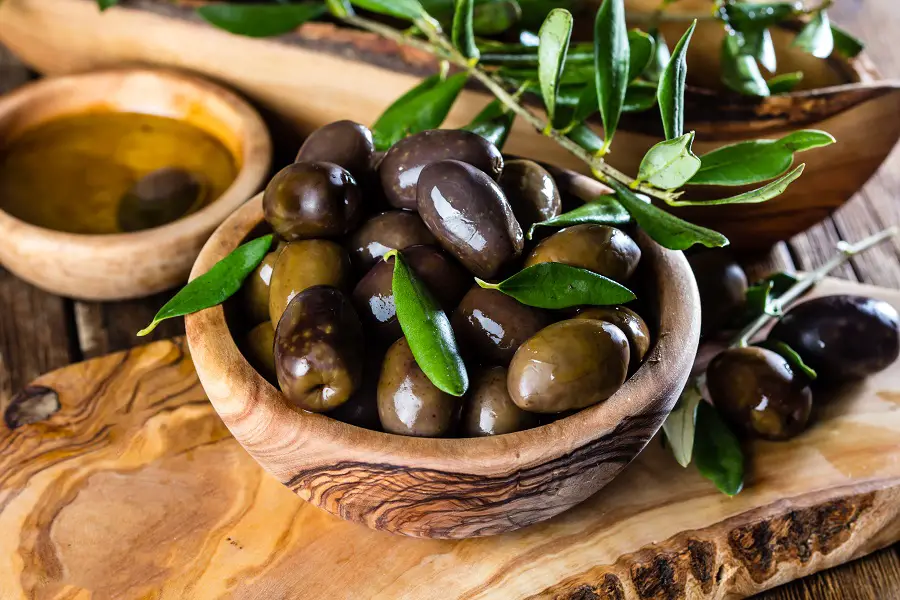
The olive tree, the oldest cultivated tree
We find the olive tree mentioned in old historical documentswhere its cultivation in the territories of ancient Crete and Syria is confirmed more than five thousand years ago. There is much historical evidence of their presence found in archaeological sites, tombs, books and documents. Olive branches have been found in the tomb of the Egyptian pharaoh Tutankhamun, olive oil, olive branches and olive wood have been mentioned numerous times in the Bible and the Koran, olives were known to be an important part of the diet of the inhabitants of ancient Rome.
The average lifespan of an olive tree is between 300 and 600 years, but there are specimens that live much longer. There are disputes between countries over who owns the oldest olive tree. A specimen from Crete is thought to be over 2000 years old, while Italy and Lebanon claim to have olive trees that are over 3000 years old. But the oldest certified olive tree is in Greece, 2000 years old and still growing.
Types of olive
Native to the eastern coast of the Mediterranean, the olive has been cultivated in other areas because of the qualities of the fruit and the oil obtained from it. More than 20 countries are known to grow it in agricultural plantations, with 60% of the area under olive cultivation in Europe. The top 5 olive-growing countries are Spain, Italy, Turkey, Greece and Syria.
There are 2 main types of olive trees. One is Olea europaea, the traditional olive tree, found in the eastern Mediterranean, Syria, parts of Asia Minor, the southern end of the Caspian Sea and northern Iran. It is known for its versatile wood and highly prized tasty olives. The branches of this type of olive are known as a symbol of peace. There are several subspecies and hundreds of varieties of Olea europaea. The other type is Olea capensis, Olive tree from the sub-Saharan area of Africa, known for its harder, darker wood.
Even though there are specimens that can reach up to 40 m in height, the vast majority of olive trees are between 8 and 15 m tall and 1-1.5 m in diameter. The trunk becomes increasingly gnarled and twisted with age. The branches form a rich crown and often grow twisted. The leaves are thin and elongated, silvery green on the upper side and silvery on the lower side. The flowers are small and white, and the fruit is small and with a stone inside (drupe). Fruits of wild varieties are smaller than those grown in plantations.
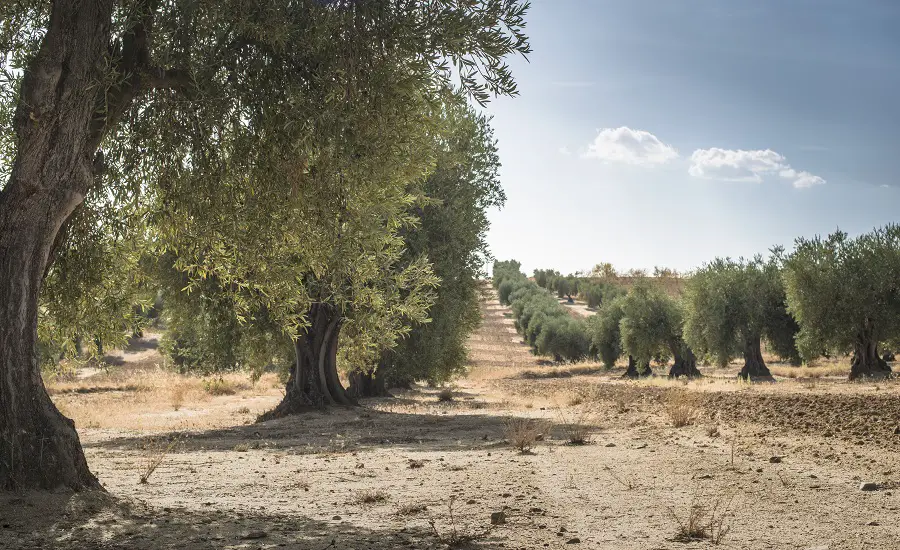
Structure and characteristics of olive wood
Olive wood has a pleasing, richly coloured and patterned appearance, making it very suitable for decorative objects. The design shows contrasting brown or black lines on a yellowish or even whitish background. During processing it gives off a distinct, pleasant and sweet fruity smell, which can linger for years after the object has been finished. It is difficult to dry and is likely to warp due to the high stresses that occur. Very slow drying at low temperatures is recommended.
The peach is yellowish to brownish with contrasting dark brown or black stripes. The colour tends to darken with age. Olive wood sometimes has twisted, wavy or wild grain, and interestingly structured blisters are found on the trunk. The texture is fine and has a moderate natural sheen that can be polished. The pores are diffuse, small to medium, moderately numerous and without a specific arrangement. The annual rings are not always visible and the medullary rays are narrow, invisible without magnifying glass.
Olive wood is hard, tough, dense and very strong. The average specific weight of dry wood is 990 kg/m³. It is generally fairly easy to process, but there are problems if the fibre is twisted or when processing the grain. In terms of rot resistance, some data say it is not resistant at all, others give average resistance. The main reason for the lack of resistance is sensitivity to insect attack. It seems that the pleasant smell attracts insects and this makes it very vulnerable.
It binds and finishes without dust and is easy to machine by turning.
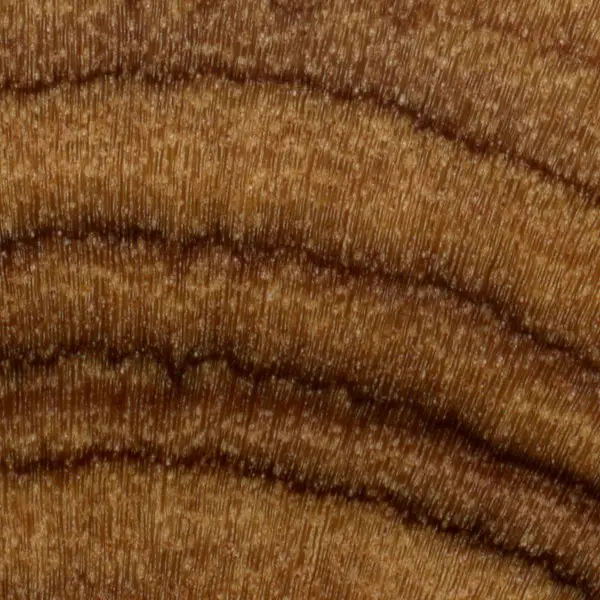
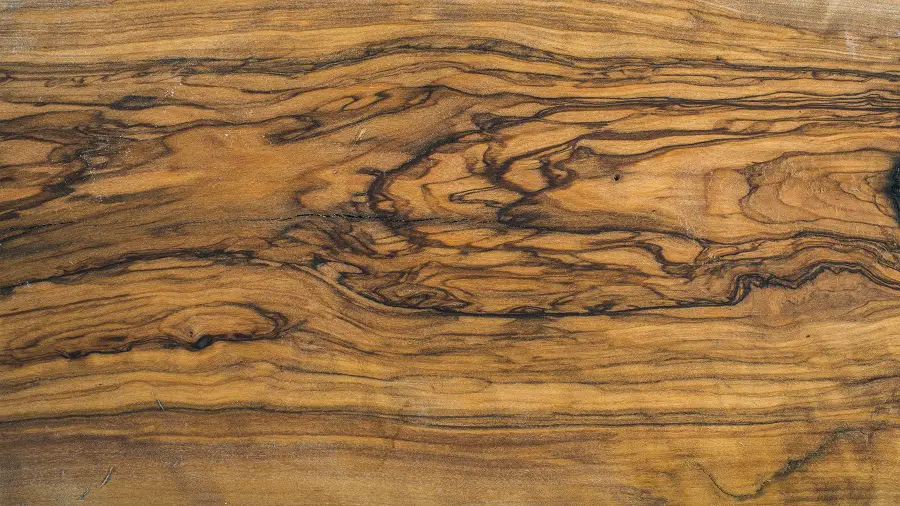
Uses
Because olive trees grow twisted and irregular, with many side branches deforming the trunk, it is difficult to obtain large straight timber. That's why it's not often used to make large pieces of furniture. The pieces of wood are generally small and are used for decorative and small interior objects, for bowls and kitchen utensils, shredders or elements in the construction of pieces of furniture.
Due to its low resistance to rotting it is not recommended for outdoor use. However, it can be used indoors for the manufacture of turned objects, handles for knives or special tools, collectors' pens, art objects, decorative veneers or in combination with other species for the manufacture of luxury furniture. Olive wood is considered special and therefore expensive.
Olive is also known for its therapeutic uses. Olive oil is considered a regulator of fat circulation in the body and is also used as a stimulator of the cardiovascular system.

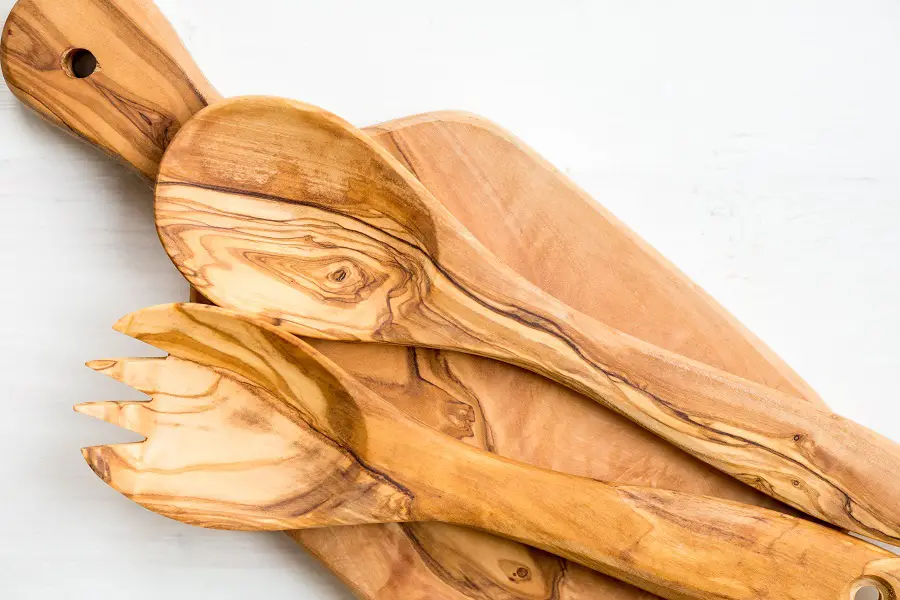
I hope you find the above interesting. If you have any other information about olive wood, please leave it in the space below. They will be added to the article and thus we will have a very complete and useful material for everyone.


























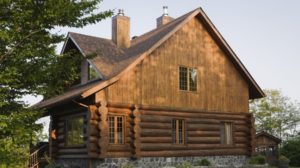

Add comment